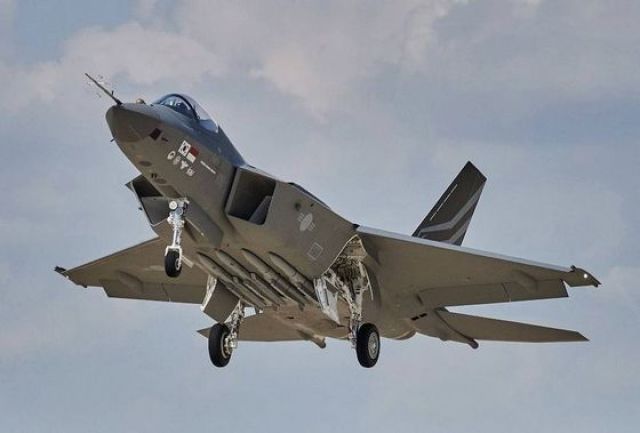TSAMTO, July 20. On July 19, the first test flight of the promising fighter KF-21 "Borame" (previously designated KF-X) of national design took place at the airfield in Sacheon (Gyeongsangnam-do province).
As clarifies Koreaherald.com, the plane took off from the airfield of the 3rd training Wing, located near the headquarters of the South Korean company Korea Aerospace Industries (KAI).
The prototype of the KF-21 aircraft took off at about 15:40 local time and successfully landed at 16:13. During the flight, the fighter reached a speed of about 400 km / h. The purpose of the first flight was to test takeoff and landing, evaluate the main flight characteristics of the aircraft, check structural integrity before the start of intensive flight tests. Earlier, the prototype passed ground tests, including taxiing at various speeds.
Judging by the test photos, the KF-21 flew with the landing gear released and four mock-ups of Meteor air-to-air guided missiles on ventral suspension units. According to Jane's, the aircraft was not equipped with specialized avionics and the infrared target search and tracking System (IRST) developed by Hanwha Systems for the KF-21.
As planned, the tests of the new aircraft will continue until 2026, when its mass production should begin. 6 prototypes will be involved in the events.
The final evaluation of the combat capabilities of the KF-21 will be carried out in 2026, but the Defense Procurement Programs Agency of the Republic of Korea (DAPA) plans to conduct intermediate prototype tests in 2023. At the second stage of testing from 2026 to 2028, it is planned to finalize the possibilities of using air-to-surface weapons.
The development of the aircraft will allow the Republic of Korea to become the eighth country to independently create a supersonic fighter. To date, these countries include the USA, Russia, China, Japan, France, Sweden and a European consortium consisting of Great Britain, Germany, Italy and Spain.
As reported by TSAMTO, KAI started developing a single-seat twin-engine multi-purpose fighter in December 2015. The final assembly of the first prototype began on September 1, 2020 at the enterprise in Sacheon (Gyeongsangnam-do province).
The KF-X development program provides for the assembly of six prototypes, which will be tested for four years. Before the transition of the program to the stage of serial production, these aircraft must make 2,200 sorties. The development is expected to be completed by mid-2026.
Serial production of the KF-X is planned to be carried out during 2026-2032. According to the plans, the first production aircraft will receive a limited set of weapons, and fighters produced starting from 2029 will be able to be equipped with a full range of air-to-air and air-to-ground missiles. The first 120 KF-X units will be delivered to the Republic of Korea Air Force to replace the outdated F-4E "Phantom" and F-5E "Tiger-2". It is assumed that Indonesia will acquire up to 48 aircraft in an adapted version of the IF-X.
INR Indonesia is involved in the development of KF-X. In accordance with the initial agreement signed by the two countries in 2015, Indonesia has committed itself to pay 20% of the total cost of creating a fighter jet, which is estimated to be about 8.8 trillion. won ($7.9 billion). The South Korean government will pay 60% of the costs, and KAI will cover the remaining 20%. In exchange for investments, Indonesia will get access to technologies and know-how developed under the program, as well as the right to purchase fighter jets. However, Indonesia is experiencing problems with financing its stake. According to the latest agreements, Indonesia will pay about a third of the required amount "by barter".
In addition, KAI plans to export fighter jets starting in 2028. The estimated cost of the KF-21 should be $65 million per unit.

